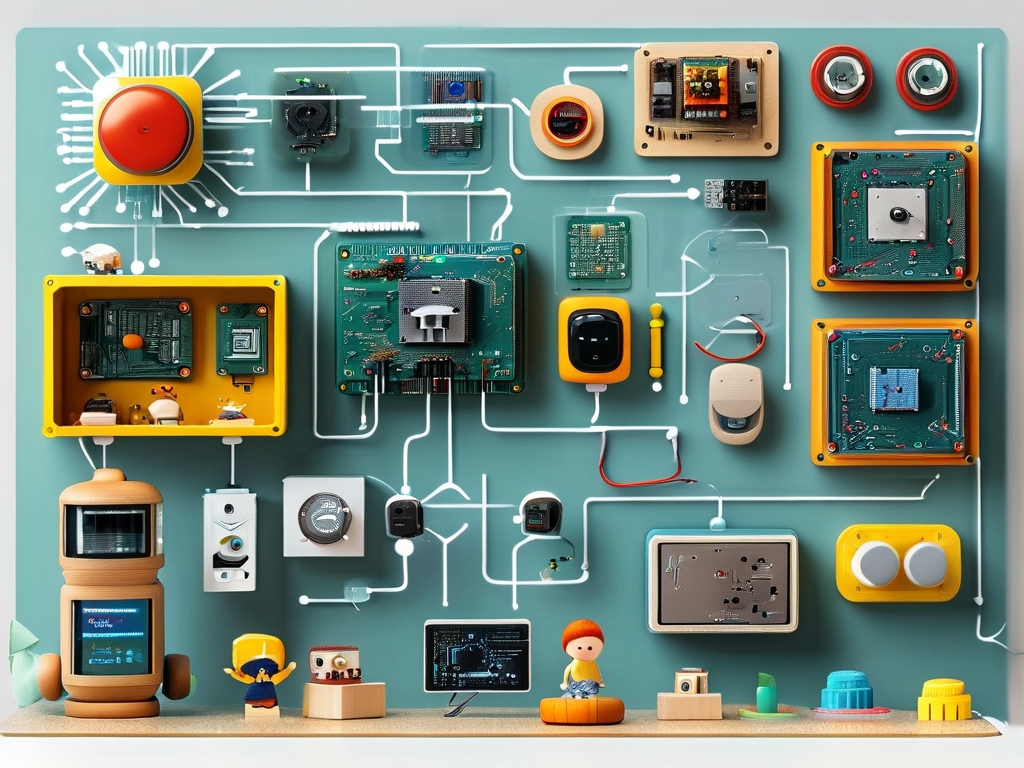The intersection of play and technology has reached unprecedented heights with the rise of embedded toy development. These interactive devices, equipped with microcontrollers, sensors, and programmable logic, are reshaping how children engage with both education and entertainment. Unlike traditional toys, embedded systems enable dynamic experiences—combining physical interaction with digital outcomes to foster creativity, problem-solving, and foundational STEM skills.

One groundbreaking example is the integration of Arduino-based kits into children’s building blocks. These kits allow kids to construct robots or smart vehicles while learning basic coding principles. For instance, a simple drag-and-drop interface lets users program motor movements or LED patterns, turning abstract concepts like loops and conditionals into tangible results. Such hands-on experimentation bridges the gap between theoretical learning and real-world application, making complex ideas accessible even to preschoolers.
Another trend is the use of IoT-enabled toys that connect to mobile apps or cloud platforms. A stuffed animal with embedded sensors, for example, might respond to touch or voice commands, teaching children about cause-and-effect relationships. Meanwhile, data collected from these interactions can provide parents insights into their child’s cognitive development. However, this raises questions about privacy and data security—a challenge developers must address through robust encryption and transparent user policies.
The educational impact of embedded toys extends beyond individual play. Schools are increasingly adopting tools like Micro:bit devices to introduce coding in classrooms. A case study from a UK primary school showed that students using Micro:bit kits improved their logical reasoning scores by 22% within six months. Teachers observed heightened collaboration as students worked in teams to debug code or design interactive stories. This collaborative element mirrors real-world engineering workflows, preparing children for future careers in tech-driven fields.
Critics argue that over-reliance on technology might diminish traditional play’s social and imaginative benefits. Yet, hybrid designs are emerging to balance both worlds. Take “smart puzzles” that combine physical pieces with augmented reality (AR) overlays: children assemble a 3D structure, then use a tablet to animate it, blending tactile engagement with digital storytelling. Such innovations highlight how embedded systems can enhance—not replace—classic play patterns.
For developers, creating these toys demands interdisciplinary expertise. Hardware engineers must optimize power consumption and durability for rough handling, while software teams design intuitive UIs tailored to young users. A common pitfall is overcomplicating features; successful products prioritize simplicity. For example, the Code-a-Pillar toy by Fisher-Price uses modular segments—each representing a code command—that toddlers rearrange to dictate the toy’s movement. This minimalist approach proves that effective embedded design often lies in elegance, not complexity.
Looking ahead, advancements in AI and machine learning will further transform embedded toys. Imagine a doll that adapts its personality based on a child’s interactions or a construction set that suggests design improvements via voice feedback. These possibilities hinge on ethical considerations, such as ensuring AI models avoid bias and promote inclusive play experiences.
In , embedded toy development represents more than a niche market—it’s a gateway to cultivating tech literacy from an early age. By merging play with programming, problem-solving, and creativity, these tools empower children to become not just consumers of technology but innovators shaping tomorrow’s digital landscape.

